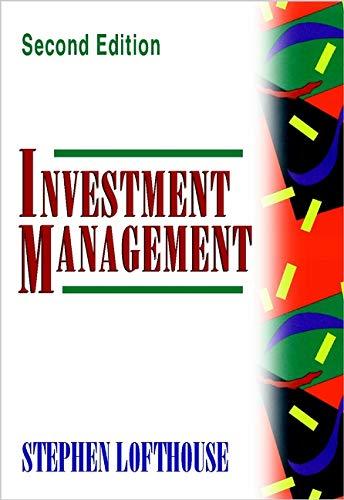Question
Delsing Canning Company is considering an expansion of its facilities. Its current income statement is as follows: The company is currently financed with 50 percent
Delsing Canning Company is considering an expansion of its facilities. Its current income statement is as follows:

The company is currently financed with 50 percent debt and 50 percent equity (common stock, par value of $10). In order to expand the facilities, Mr. Delsing estimates a need for $2.5 million in additional financing. His investment banker has laid out three plans for him to consider:
The company is currently financed with 50 percent debt and 50 percent equity (common stock, par value of $10). In order to expand the facilities, Mr. Delsing estimates a need for $2.5 million in additional financing. His investment banker has laid out three plans for him to consider:
2. Sell $2.5 million of common stock at $20 per share.
3. Sell $1.25 million of debt at 12 percent and $1.25 million of common stock at $25 per share.
Variable costs are expected to stay at 50 percent of sales, while fixed expenses will increase to $2,350,000 per year. Delsing is not sure how much this expansion will add to sales, but he estimates that sales will rise by $1.25 million per year for the next five years.
Delsing is interested in a thorough analysis of his expansion plans and methods of financing. He would like you to analyze the following:
A. The break-even point for operating expenses before and after expansion (in sales dollars).(Enter your answers in dollars not in millions.)
B. The degree of operating leverage before and after expansion. Assume sales of $5.5 million before expansion and $6.5 million after expansion. Use the formula in footnote 2 of the chapter. (Enter only numeric values rounded to 2 decimal places.)
C-1. The degree of financial leverage before expansion. (Enter only numeric value rounded to 2 decimal places.)
C-2. The degree of financial leverage for all three methods after expansion. Assume sales of $6.5 million for this question. (Enter only numeric values rounded to 2 decimal places.)
D. Compute EPS under all three methods of financing the expansion at $6.5 million in sales (first year) and $10.5 million in sales (last year). (Round your answers to 2 decimal places.)

Step by Step Solution
There are 3 Steps involved in it
Step: 1

Get Instant Access to Expert-Tailored Solutions
See step-by-step solutions with expert insights and AI powered tools for academic success
Step: 2

Step: 3

Ace Your Homework with AI
Get the answers you need in no time with our AI-driven, step-by-step assistance
Get Started


